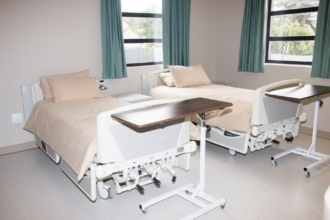When a patient receives a terminal illness diagnosis, they may have the option to receive end-of-life care in different settings, such as
- Their home
- An assisted living community
- A nursing home
- A hospital
- A skilled nursing facility
- Independent hospice facilities
Patients typically want to receive hospice care at home for maximum comfort, and their families often prefer that as well. However, that’s not always the best choice, especially when the patient has a particularly complex or aggressive condition with symptoms that would be challenging to manage in a home setting.
In those cases, a hospice program in a hospital or skilled nursing facility (SNF) may be the best option. Not only will this ensure the patient has regular access to pain and symptom relief, but it will also reduce stress for the patient’s family. In many cases, once the patient’s symptoms are under control, they can return to in-home hospice care.
If you’re considering starting a hospice business and doing your research, keep reading to find out how hospice care differs at home vs in a hospital setting. (Note that in both scenarios your hospice is responsible for patient care, but the level of effort and exact duties may differ.)
Hospice care at home vs hospital (or skilled nursing facility)
For the purposes of this article, the information below assumes similar operations between a hospital and SNF, as both may offer in-patient hospice services and are often referenced together in the Code of Federal Regulations (CFR), an official publication containing rules published in the Federal Register by departments and agencies of the federal government.
1. Equipment and service responsibilities
With at-home hospice care, your hospice will need to supply, transport, and maintain all equipment and medical devices necessary to manage the patient’s condition and provide comfort.
Hospitals and SNFs often have some or all of the necessary medical equipment on hand, so your hospice may not need to supply as much equipment. It depends on how you provision these items in your agreement with the facility.
2. Coordination of care
While your hospice is the only entity providing care in an at-home care setting, hospice care in a hospital or SNF setting requires consultation with that facility’s care team. To ensure there are no gaps in care for the patient, you must have a written agreement in place with the SNF in accordance with Part 418.112 of the CFR.
Here are summary points of the nine items that must be in this agreement:
- The communication approach your hospice team and the SNF team will use
- A provision that the SNF will immediately notify the hospice if certain conditions occur
- Confirmation that your hospice assumes responsibility for determining the appropriate course of hospice care
- An agreement that the SNF team assumes responsibility for furnishing 24-hour room and board care
- An agreement that your hospice provides services at the same level as those that would be provided if the patient were in their own home
- Details of your hospice’s responsibilities, including providing medical direction, provision of medical supplies, and other hospice services
- A provision that your hospice may use SNF nursing personnel where permitted by state law and as specified by the SNF to assist in administering prescribed therapies to the extent of the services the patient’s family would render
- Confirmation that your hospice will report all alleged violations involving mistreatment, abuse, and theft of patient property to the SNF administrator within 24 hours of discovery
- A delineation of responsibilities of your hospice and the SNF regarding bereavement services for SNF staff
3. Payment
The Centers for Medicare & Medicaid Services (CMS) is a federal agency that provides numerous Medicare hospice regulations that facilities must abide by — whether the facilities are part of a hospital, nursing home, or home health agency.
CMS establishes the payment amounts you’ll receive in providing hospice care. For full details regarding payments, refer to Part 418.302 of the CFR.
In summary, payment rates are fixed and differ across four categories:
- Routine home care
- Continuous home care
- Inpatient respite care
- General inpatient care
As you can probably guess from the category titles, the first two relate to home-based hospice care, and the latter two relate to inpatient or facility care. Exact payments for each of these categories vary based on the geographic location of the services provided.
Smooth, effective hospice operations with Jotform
Efficient hospice operations become even more important when you’re required to collaborate with another healthcare team. You can accomplish this with Jotform Enterprise, a secure solution for hospices to ensure consistent process outcomes and regulatory compliance with easy-to-build forms:
- Hospice consent form: Ensure you have a proper record of a patient’s acceptance of care.
- Hospice referral form: Get all the details you need from hospital and other referrals, including patient and physician information.
- Hospice discharge summary form: Maintain a proper record of each patient’s discharge, including physician instructions and prescribed medications for care at home or another facility.
These and other hospice care forms are simple for administrators to create and easy for patient families and SNF staff to access. Plus, you can customize the forms in just minutes with our no-code builder so they perfectly suit your hospice’s unique needs.
In addition, hospice administrators can assign custom permissions to different users, ensuring that only the right people see confidential patient information. Start building forms for your hospice business today.
Photo by Andrea Piacquadio


















Send Comment: